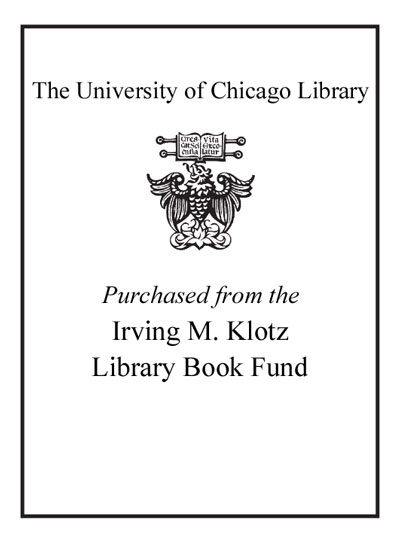On scientific representations : from Kant to a new philosophy of science /
Saved in:
| Author / Creator: | Boniolo, Giovanni. |
|---|---|
| Imprint: | Basingstoke, Hampshire ; New York : Palgrave Macmillan, 2007. |
| Description: | xx, 251 p. : ill. ; 23 cm. |
| Language: | English |
| Subject: | |
| Format: | E-Resource Print Book |
| URL for this record: | http://pi.lib.uchicago.edu/1001/cat/bib/6373648 |
Table of Contents:
- List of Figures
- Acknowledgements
- Introduction
- 1. Concepts and Objects
- 1.1. The descent of substance and the ascent of function
- 1.1.1. Some notes on Aristotle's theory
- 1.1.2. Moving to Kant's theory
- 1.1.3. Cassirer: from class-concept to function-concept
- 1.1.4. Frege: from the concept of function to the function-concept
- 1.1.5. Cassirer, Frege...and Kant
- 1.2. Concepts as representations and as rules
- 1.2.1. The proposal
- 1.3. Reality
- 1.3.1. Phenomenological description and transcendental constitution
- 1.3.2. Unobservability and observability by inference
- 1.3.3. A short conclusion
- 2. Laws of Nature
- 2.1. The failure of the Humean and pre-Humean attempts
- 2.1.1. Schlick: the dawn of the contemporary debate
- 2.1.2. Reichenbach: the search for the explication of the notion of 'law'
- 2.1.3. Nagel: the standardization of Schlick's problem
- 2.1.4. The counterfactual way
- 2.1.5. Modality and the new metaphysicians
- 2.1.6. Should we abandon philosophy?
- 2.2. Back to Kant
- 2.2.1. The status quaestionis
- 2.2.2. The transcendental level
- 2.2.3. The metaphysical level
- 2.2.4. The empirical level
- 2.2.5. The empirical laws and the second analogy of experience
- 2.2.6. The unity of system
- 2.2.7. The discovery of laws
- 2.2.8. Causality and purposiveness
- 2.2.9. Lawfulness
- 2.2.10. Schlick's problem
- 2.3. The system of lawness and the constitution of lawfulness
- 3. Theories, Models, Thought Experiments and Counterfactuals
- 3.1. Theories and models: old hat?
- 3.1.1. Theories as hypothetical representations of the world
- 3.1.2. Models as fictive representations of the world
- 3.1.3. As if the world were
- 3.1.4. Theories and models: two kinds of representation
- 3.1.5. Models and mathematical schemes
- 3.1.6. Models and mathematized representations
- 3.1.7. Ideal-typical models
- 3.2. Thought experiments
- 3.2.1. Newton and Mach: a case of rhetorical thought experiment
- 3.2.2. Exploratory/clarifying thought experiments
- 3.2.3. Thought experiments and real experiments
- 3.2.4. What thought experiments are
- 3.2.5. Conclusions on fictive representations
- 3.3. Fictions and counterfactuals
- 3.3.1. A well-known analytical[subscript l-l] history
- 3.3.2. A less-known analytical[subscript h] history
- 3.3.3. Counterfactual proposition and counterfactual argument
- 3.3.4. The judge's hermeneutical region
- 3.3.5. The analytical[subscript h] approach
- Notes
- Bibliography
- Index


